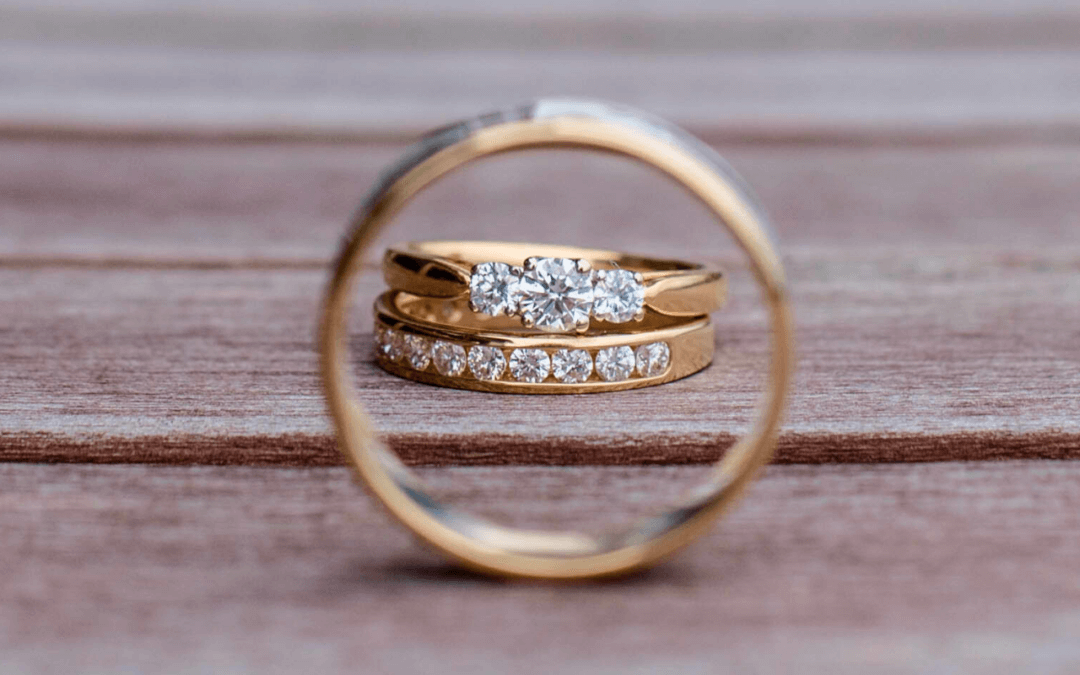Step into the world of luxury and elegance with the latest innovation in fine jewelry – composite diamonds. As the demand for sustainable and ethically sourced gemstones continues to rise, composite diamonds have emerged as a groundbreaking alternative that combines the best of both worlds. These exquisite gems are crafted using advanced technology, blending natural diamond fragments with a high-quality composite material to create stunning pieces that are indistinguishable from their natural counterparts.
In this captivating journey, we will delve into the beauty, craftsmanship, and sustainability behind composite rings and diamonds, shedding light on their immense potential in revolutionizing the jewelry industry. Join us as we explore the intricate process of creating these remarkable gems, their unique characteristics, and the environmental benefits they offer. Prepare to be dazzled by the brilliance of composite diamonds, a true testament to the fusion of innovation and beauty in the world of fine jewelry.
What are Composite Diamonds?
Composite diamonds, also known as lab-grown diamonds or engineered diamonds, are man-made gems that possess the same physical and chemical properties as natural diamonds. These gems are created in a controlled laboratory environment using a combination of cutting-edge technology and scientific expertise.
The Science Behind Composite Diamonds
The process of creating composite diamonds involves recreating the conditions found deep within the Earth’s mantle, where natural diamonds are formed over millions of years. By subjecting a small diamond seed to extreme heat and pressure, scientists are able to mimic the natural diamond growth process, resulting in the formation of composite diamonds.
Benefits of Owning Composite Diamond Jewelry
When it comes to diamond jewelry, many people immediately think of engagement rings. While engagement rings are undoubtedly a popular choice for showcasing diamonds, they are far from the only option. For those looking for a large diamond ring, composite diamond jewelry offers an excellent alternative to traditional solitaire styles.
1. Affordability
Composite diamonds are small individual diamonds that are skillfully fused together to create the appearance of a larger diamond. This innovative technique allows you to enjoy the look of a large diamond ring without the hefty price. By choosing composite jewelry, you can achieve a stunning, sizeable diamond ring without the hefty price tag, making it an ideal choice for budget-conscious buyers.
2. Durability
Diamonds are often admired for their strength, and composite styles are no exception. The smaller stones in composite diamond jewelry are securely held in place by metal casings, which enhance their durability. This structure minimizes the risk of chipping or breaking, ensuring your diamond ring retains its beauty for years to come.
3. Exceptional Sparkle
One of the standout features of composite diamonds is their enhanced brilliance. Thanks to the multiple facets created by the smaller diamonds within the composite, light reflects beautifully across the surface. This design gives your ring unmatched fire and sparkle, creating a dazzling effect that rivals a larger diamond. Whether it’s for an engagement ring or a statement piece, composite diamonds provide stunning shine and elegance.
Comparison Between Composite Diamonds and Natural Diamonds
When considering a composite diamond, it’s important to understand the similarities and differences between these and natural diamonds. In terms of physical properties, composite diamonds hold many of the same characteristics as natural stones, including hardness, refractive index, and brilliance. However, because they are made from multiple diamonds fused together, they may exhibit slight variations in clarity and color. These differences are often a result of the manufacturing process, where smaller diamonds are combined to create a larger-looking diamond.
How Composite Diamonds are Made
The process of creating composite diamonds involves combining multiple small diamonds to simulate the appearance of a single diamond. First, individual stones are selected for their compatibility in size and color. These smaller diamonds are then meticulously arranged and bonded together to form a cohesive unit. The result is a diamond cluster that gives the appearance of one cohesive gem, often used to create a larger-looking diamond. This technique allows jewelers to maximize the visual appeal of diamonds set in intricate designs.
Composite Diamonds vs. Other Diamond Alternatives
When comparing composite diamonds to other alternatives like cubic zirconia or moissanite, composite diamonds hold several advantages. While cubic zirconia and moissanite can mimic the appearance of a single diamond, they often lack the hardness and durability of natural diamonds or composite stones. By combining notched diamonds or two diamonds, composite options deliver unmatched brilliance and longevity, making them an ideal choice for those seeking beauty and resilience in their jewelry.
Composite Diamonds in Fine Jewelry Design
Composite diamonds have revolutionized the world of jewelry design, offering unparalleled versatility. Jewelers can use multiple small diamonds to create unique pieces that cater to individual preferences. For example, a diamond cluster can serve as a stunning center diamond in an engagement ring, or a diamond cushion design can provide vintage-inspired elegance. By incorporating notched diamonds or diamonds set in creative arrangements, jewelers can craft pieces that balance style and affordability.
Composite Diamonds and Sustainability
One of the most compelling aspects of composite diamonds is their sustainability. Unlike natural diamonds, which require extensive mining and contribute to environmental degradation, composite diamonds are made using laboratory techniques that minimize resource use. This process significantly reduces carbon emissions, water consumption, and land disturbance. For eco-conscious consumers considering a composite diamond, this makes them a greener alternative while still offering exceptional beauty.
Different Types Of Composite Diamonds Available On The Market Today
In the traditional diamond market, 14k white gold is the most popular choice for engagement and wedding rings.
However, cubic zirconia is also a popular choice for those looking for a more affordable option. Solitaire diamond rings are also available in a variety of sizes and shapes to suit any budget.
With so many choices on the market today, it can be difficult to know which type of composite diamond is right for you.
The Different Types Of Composite Diamonds Available On The Market Today
When shopping for an engagement ring, the choices can feel overwhelming, especially with the variety of composite diamonds now available. Whether you’re shopping for a composite diamond or exploring more traditional options, understanding the types of diamonds on the market is essential. From 1 ct tw 14k white gold rings to larger options like a diamond engagement ring 3 ct, there’s something for every style and budget. Here’s a guide to help you navigate the options:
Here is a quick guide to the different types of composite diamonds available today:
Traditional diamond ring:
A traditional diamond ring is crafted from a single piece of diamond, typically cut into classic shapes like round or princess. For instance, a ring 2 ct tw princess-cut or a diamond engagement ring 2 ct set in 14k white gold is a timeless option for those who prefer elegance and simplicity. These rings are ideal for anyone looking for a classic piece that never goes out of style.
14k white gold:
14k white gold is one of the most popular settings for diamond engagement rings, combining durability and affordability. For those on a budget, options like a ct tw 14k white gold ring or a round 14k white gold setting provide timeless beauty without breaking the bank. If you’re considering a two-tone option, 14k two-tone gold or a ct tw 14k two-tone gold design offers a modern twist, blending yellow gold and white accents for a unique style.
Cubic Zirconia:
For a more affordable alternative, cubic zirconia is a great option. It mimics the sparkle of a diamond but comes at a fraction of the cost. Available in various styles, from round 10k white gold to ct tw 14k yellow gold settings, cubic zirconia offers versatility for those who want the look of a diamond without the expense. Whether you’re shopping for a composite diamond or looking for a colorful, standout piece, cubic zirconia delivers on style and affordability.
Solitaire Diamond Ring:
A solitaire diamond ring is made from a single piece of diamond. Usually, the diamond is cut into a round or princess shape and set in a simple metal band. Solitaire diamond rings are classic and timeless, and they are perfect for those who want a traditional engagement or wedding ring.
How To Care For Your Composite Diamond?
With many composite diamond rings on the market, it can be hard to know how to care for your own.
Here are a few tips to help keep your ring sparkling:
- Avoid chemicals. Harsh chemicals can damage the surface of your diamond simulant. When cleaning your ring, use only mild soap and warm water.
- Avoid heat. Extreme heat can cause your composite diamond to crack or chip. When storing your ring, keep it in a cool, dry place.
- Avoid abrasives. Abrasive materials can scratch the surface of your diamond simulant. When cleaning your ring, use only soft cloths or brushes. avoid using harsh cleaners or polishes.
The Future of Composite Diamonds in the Jewelry Industry
As consumer awareness about sustainability and ethical sourcing continues to grow, the demand for composite diamonds is expected to rise. With advancements in technology, the quality and availability of composite diamonds will only improve, further solidifying their place in the jewelry industry. As jewelry enthusiasts embrace the beauty and sustainability of composite diamonds, they pave the way for a more ethical and environmentally conscious future.
In conclusion, composite diamonds are a game-changer in the world of fine jewelry. Their exquisite beauty, durability, and sustainability make them an attractive choice for consumers and jewelers alike. By combining advanced technology with the timeless elegance of diamonds, composite diamonds offer a new standard of luxury that is both environmentally conscious and socially responsible. As we continue to shine a light on composite diamonds, it becomes clear that they are not just a passing trend, but a true breakthrough in fine jewelry that is here to stay.
With composite diamonds, you can now adorn yourself with the brilliance of nature without compromising your values. The future of fine jewelry is shining brighter than ever, thanks to composite diamonds. So why wait? Step into a world of brilliance and elegance with composite diamonds today!
Have you heard about the new composite diamonds?
They’re taking the jewelry world by storm! At M.I. Trading, we make sure to bring our customers only the best diamond deals – from classic white diamonds to lab-created composites that look and feel stunningly real.
We believe in giving everyone access to beautiful jewelry without breaking their bank accounts, which is why composite diamonds are so popular with us.
These unique pieces of art come in all shapes, sizes, and colors for any occasion or budget – you won’t find something more versatile than this! And with some styles priced up to 50% less than traditional diamonds, you can get a ring of high quality without sacrificing your savings.



Recent Comments